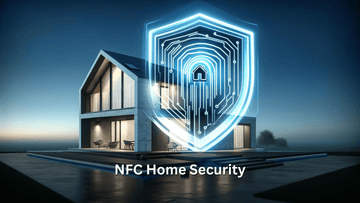NFC Battery Impact

Understanding Smartphone Battery Technology
Smartphone batteries, primarily lithium-ion (Li-ion) and lithium-polymer (LiPo), are central to device design and user experience. Li-ion batteries are favored for their high energy density and low maintenance, not requiring a full discharge to prolong life. They are used in a wide range of devices from budget phones to high-end smartphones. LiPo batteries, while similar to Li-ion in terms of their basic chemistry, are generally lighter and can be shaped more freely, which helps smartphone manufacturers design slimmer and lighter devices.
Battery longevity is influenced by the battery's capacity, which is measured in milliampere-hours (mAh), indicating the amount of energy it can store. Higher mAh ratings generally equate to longer battery life, allowing the device to run longer on a single charge. However, battery life is not only about capacity but also about the efficiency of the device's processor and how the operating system manages power. Advances in battery technology, such as the integration of silicon in the anodes or the development of solid-state batteries, promise even higher capacities and faster charging times.
Maximizing Battery Life on Android and iOS
To maximize battery life on both Android and iOS devices, users can follow several effective strategies:
-
Adjust Screen Brightness: Both systems allow you to manually adjust the brightness to a lower setting, which conserves battery. Disabling auto-brightness can also prevent the device from using more power than necessary.
-
Power-Saving Modes: Android's "Battery Saver" and iOS's "Low Power Mode" reduce or halt background activity and decrease system animations to extend battery life. These modes can be activated manually or set to engage at a specific battery level.
-
Manage Background App Refresh and Location Services: On iOS, go to Settings > General > Background App Refresh and turn it off or select which apps can refresh in the background. For Android, similar settings can be found under Settings > Apps & notifications > Advanced > Special app access > Battery optimization. Additionally, both platforms allow you to control which apps have access to location services, which can significantly drain your battery.
-
Update to the Latest Software: Both Android and iOS frequently release updates that optimize battery life. Keeping your device up to date ensures that you benefit from these improvements.
-
Limit Push Notifications: Disable unnecessary notifications via Settings on both platforms to prevent apps from waking your device frequently, which consumes power.
For more detailed tips and step-by-step instructions specific to each platform, you can visit resources such as PCMag for Android (PCMag) and Apple's official support page for iOS devices. These sources provide a wealth of information on additional minor adjustments that can further enhance battery performance.
Impact of NFC on Battery Life
NFC (Near Field Communication) technology has a minimal impact on smartphone battery life when compared to other wireless technologies like Bluetooth, Wi-Fi, and cellular data. NFC is designed to operate over very short distances (usually a few centimeters) and only transmits data when in close proximity to another NFC device or tag. This intermittent and low-power transmission means that NFC's battery usage is significantly lower than that of other wireless technologies that continuously search for signals and transmit over greater distances.
In contrast, technologies like Bluetooth and Wi-Fi not only cover larger areas but are also typically active for longer periods, leading to greater battery drain. GPS is another high-consumption technology, continuously utilizing satellite signals to update location data, which can quickly deplete a smartphone's battery.
Furthermore, NFC is often only activated when specifically needed, such as for making payments or pairing devices, and does not run continuously in the background. This on-demand activation significantly reduces its battery usage compared to other services that might run constantly in the background, such as email synchronization or location services.
While NFC does use power, its impact on battery life is relatively minor, especially when compared to the constant use of mobile data, Wi-Fi, Bluetooth, and GPS services that require more power and are often used much more frequently throughout the day. For detailed comparisons and more technical insights, referring to specific articles on wireless technology and battery consumption might provide deeper understanding.
QR Code Efficiency and Battery Usage
Scanning QR codes generally has a moderate impact on smartphone battery life, primarily because the process involves using the device's camera and image processing capabilities. The camera, being one of the more power-intensive components of a smartphone, can drain battery especially if QR scanning is frequent or involves maintaining the camera in an active scanning mode for extended periods.
However, the actual battery drain from QR code scanning can be mitigated through efficient usage practices:
-
Minimize Screen Brightness During Scanning: Since the screen and camera are the primary consumers of power during QR code scanning, lowering screen brightness can help reduce battery consumption.
-
Use Efficient Scanning Apps: Some apps are optimized to use less battery during QR scanning by efficiently managing camera activation and shutdown. Look for apps that specifically mention battery optimization.
-
Limit Background Activity: While scanning QR codes, ensure that unnecessary apps are closed or that background activities are minimized to conserve power.
-
Quick Scanning: Aim to scan QR codes quickly and avoid keeping the camera active for longer than necessary. Efficient scanning practices not only save time but also conserve battery life.
Frequent scanning of QR codes can add up in terms of battery usage, especially if the scans are part of a regular routine. Users should consider the frequency and necessity of scanning QR codes and adjust their usage patterns to optimize battery life. For example, preparing QR codes in advance for quick access or using screenshots of QR codes where feasible can also reduce the need for prolonged camera use.
Battery Health Management
Managing battery health is crucial for maintaining the longevity of your smartphone. Here are some key strategies:
-
Avoid Extreme Charging: Keep your battery level between 20% and 80%. Charging up to 100% can stress the battery, while letting it drop to 0% can cause it to degrade faster. Many modern smartphones have settings that help manage this balance by limiting maximum charge.
-
Monitor Temperature: Batteries are sensitive to temperature extremes. Avoid exposing your phone to high temperatures, especially while charging, as heat can accelerate battery degradation. Similarly, charging in very cold conditions can also negatively affect battery life.
-
Use Manufacturer-Provided Chargers: For optimal charging, use the charger that came with your device. Third-party chargers may not adhere to the same standards and could deliver inappropriate current and voltage, potentially harming your battery.
-
Periodic Calibrations: About once a month, allow your battery to discharge nearly completely before charging it fully to recalibrate the battery meter. This helps the battery meter on your phone more accurately reflect its actual charge.
-
Regular Software Updates: Keeping your phone updated ensures you benefit from any optimizations or fixes that manufacturers roll out, which can include improvements to battery management systems.
By following these guidelines, you can help ensure that your smartphone's battery remains healthy and functional over a longer period. For more detailed information and additional tips, reference manufacturer-specific advice such as Apple’s battery care section and similar guidance from Android device manufacturers. You can explore more in-depth tips and suggestions for extending your battery life and improving performance at the following links:
- Apple Support: Charge and maintain your iPhone battery
- Apple Support: About Optimized Battery Charging on your iPhone
- Samsung Support NZ: 11 Tips to Extend and Improve Your Samsung Galaxy Battery Life
- Samsung UK Support: Galaxy Battery Care and Maintenance
We at NFC Tagify provide all sort of NFC Solutions or you may contact us: Tel. 01600800080, Email: info@nfctagify.com









